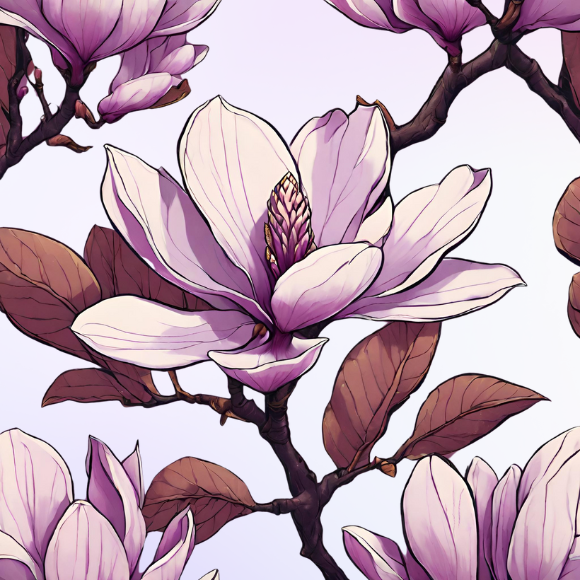In the diverse landscape of American horticulture, one genus stands out as an embodiment of timeless elegance and natural grandeur—magnolia. With its captivating blossoms, glossy evergreen foliage, and a rich history steeped in tradition, magnolia gardening has become an integral part of the American gardening tapestry. This botanical treasure has graced gardens from coast to coast, weaving a story of resilience, beauty, and cultural significance that has captivated generations of enthusiasts.

A Botanical Symphony
Magnolias, members of the Magnoliaceae family, have held a place of prominence in American gardens for centuries. The genus encompasses a stunning array of species and cultivars, each with its unique charm and characteristics. From the iconic Southern Magnolia (Magnolia grandiflora) with its large, waxy leaves and fragrant ivory blossoms to the delicate Star Magnolia (Magnolia stellata) adorned with star-like, white petals, these trees and shrubs offer a symphony of shapes, sizes, and colors.
The allure of magnolias lies not only in their remarkable blooms but also in their versatility. Magnolia enthusiasts can choose from a variety of sizes, making these ornamental trees suitable for landscapes ranging from expansive estates to small urban gardens. Their adaptability to different climates further enhances their appeal, allowing gardeners in diverse regions to experience the magic of magnolia blossoms.
A Historical Tapestry
To truly understand the significance of magnolia gardening in America, you have to dig into its historical roots. Magnolias have deep ties to the Southern United States, where the majestic Southern Magnolia reigns as an iconic symbol of the region. These evergreen giants, with their large, glossy leaves and fragrant, cup-shaped blossoms, have adorned Southern landscapes since the early days of colonization.
Plantation gardens, antebellum estates, and historic landscapes proudly showcase the enduring beauty of magnolias, illustrating their role in shaping the cultural and aesthetic identity of the American South. The prevalence of magnolias in literature, art, and folklore further underscores their cultural significance, turning them into symbols of hospitality, grace, and resilience.
Beyond the South, magnolias have found homes in diverse climates across the country, adapting to colder winters and flourishing in the Pacific Northwest, the Midwest, and even the Northeast. This geographical diversity has transformed magnolia gardening into a shared passion that transcends regional boundaries.
Magnolia Cultivars: A Palette of Possibilities
The world of magnolia gardening is enriched by a vast array of cultivars, each with its unique characteristics that cater to the preferences and constraints of different gardeners. Whether one seeks a compact tree for a small yard, a show-stopping focal point for a larger landscape, or a specific flower color to complement existing plantings, there is a magnolia cultivar that fits the bill.
From the exquisite Jane Magnolia, adorned with tulip-shaped pink-purple blooms in early spring, to the enchanting Butterflies Magnolia, known for its vibrant yellow flowers, the diversity of magnolia cultivars ensures that every gardener can find a variety that resonates with them. The breeding efforts of dedicated horticulturists have resulted in the development of cultivars that not only showcase the classic magnolia charm but also introduce exciting innovations, such as extended bloom periods, compact forms, and unique foliage.
Magnolia Gardening Today: Challenges and Opportunities
While magnolia gardening in America has flourished over the years, it has not been without its challenges. Climate change, invasive pests, and diseases pose threats to these beloved trees, prompting a need for conservation efforts and sustainable gardening practices. As gardeners grapple with these challenges, they also find opportunities to contribute to the preservation and enhancement of magnolia populations across the country.
Community initiatives, botanical gardens, and conservation organizations play a vital role in educating the public about magnolias and supporting research to address the environmental threats they face. The sharing of knowledge and experiences within the gardening community fosters a sense of camaraderie and collective responsibility, ensuring that the legacy of magnolia gardening endures for generations to come.
Conclusion
Magnolia gardening in America is a celebration of nature’s beauty, our cultural heritage, and the enduring passion of gardeners who have nurtured these iconic trees for centuries. From the grandeur of Southern Magnolias in historic plantations to the delicate blossoms of hybrid cultivars in contemporary landscapes, magnolias continue to inspire and enchant.
As we embark on a journey through the rich tapestry of magnolia gardening in America, we will explore the history, cultural significance, and the evolving landscape of this botanical pursuit. From the early days of discovery and cultivation to the present challenges and opportunities, magnolia gardening stands as a testament to the enduring love affair between American gardeners and these timeless symbols of grace and beauty.




